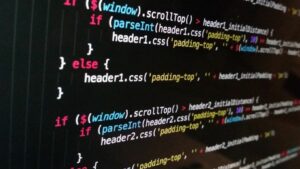In the dynamic world of software development, testing plays a pivotal role. Among the numerous testing libraries available, the React Testing Library’s userEvent module stands out. It’s a simulation of real events that occur when a user interacts with an application, providing a more realistic testing environment.
Understanding and implementing userEvent can significantly enhance the efficiency and reliability of your React applications. This article delves into the depths of this powerful tool, offering insights and practical examples to harness its full potential. Whether you’re a seasoned developer or a novice, it’s time to explore the wonders of userEvent in the React Testing Library.
Overview of React Testing Library UserEvent
UserEvent, part of the robust React Testing Library, simulates realistic user interactions. It’s a profound module that emulates a diverse array of user behaviors in various environments. More than simple clicks or keyboard actions, it mimics complex engagement like focus events, hover activities, and device-specific actions.

It’s a versatile extension of fireEvent, the basic event firing utility in the React Testing Library. UserEvent outperforms its predecessor, offering a broader range of user event simulations. With extended features, it provides a better representation of user interactions, thus increasing the integrity of the tests.
Incorporating UserEvent, developers can now design tests that mirror true user behavior. They hold the power to create complex stimuli, triggering responses from the application. By doing so, these tests uncover deep-seated issues that might otherwise seep into production.
UserEvent offers a remarkable improvement over traditional manual testing methods, paving the way for impeccable React application testing. As developers harness the potential of UserEvent, they’ll mitigate risks, enhance product quality, and deliver a seamless user experience.
In practice, UserEvent is straightforward and intuitive to use. Integrated into the larger React Testing Library, it forms a crucial part of the tester’s toolkit. Consequently, it ranks as a must-have for developers seeking rigorous and reliable testing solutions.
Getting Started with UserEvent
The first step in harnessing the power of UserEvent implies the module’s installation. Typically, developers must ensure they’ve correctly installed React Testing Library before proceeding. It forms the basis on which UserEvent operates, given the latter’s integration into the library.

Following installation, actively engaging UserEvent involves the import statement. Indicate it at the beginning of your test files. The line, import { render, screen } from '@testing-library/react';, initiates the react component’s rendering process. To access UserEvent functions, utilise the statement, import userEvent from '@testing-library/user-event';.
The primary function of UserEvent lies in its facilitation of simulated user interactions. For example, a user typing action requires the userEvent.type() function. Take, for instance, a scenario involving a text box meant to receive email addresses. To check its validity, the statement would resemble userEvent.type(screen.getByRole('textbox', {name: /email/i}), '[email protected]');.
Common Use Cases for UserEvent

- Interaction Simulation: UserEvent’s primary function lies in its ability to simulate user interactions. For example, it can emulate keyboard entries, clicks, and hover movements. Developers find this function essential in ensuring that their React applications respond as expected to user inputs.
- Form Testing: UserEvent shines when it comes to form testing. It lets developers simulate text typing into input fields, select item elements, receive dropdown selections, and even handle file uploads. An instance of this application is when UserEvent’s
typefunction enters text into input fields, simulating a real user typing. - Complex Behaviour Replication: Beyond basic interactions, UserEvent can replicate complex behaviors like focus shift events and mouse drag actions, providing a more comprehensive testing environment.
- Event Sequence Testing: UserEvent supports testing of sequences of events. For example, it can emulate a user entering text, submitting a form, and then waiting for a response. This feature ensures a smooth user journey in the application.
- Device-specific Actions: It also handles user interactions that are specific to certain devices, like touch events on mobile devices. This offers valuable insight into how the application performs across different platforms.
UserEvent’s versatility supports a broad testing regime, enhancing the effectiveness of React applications tests. Incorporating UserEvent into the test suite implies not only improved software quality but also an optimized user experience.
